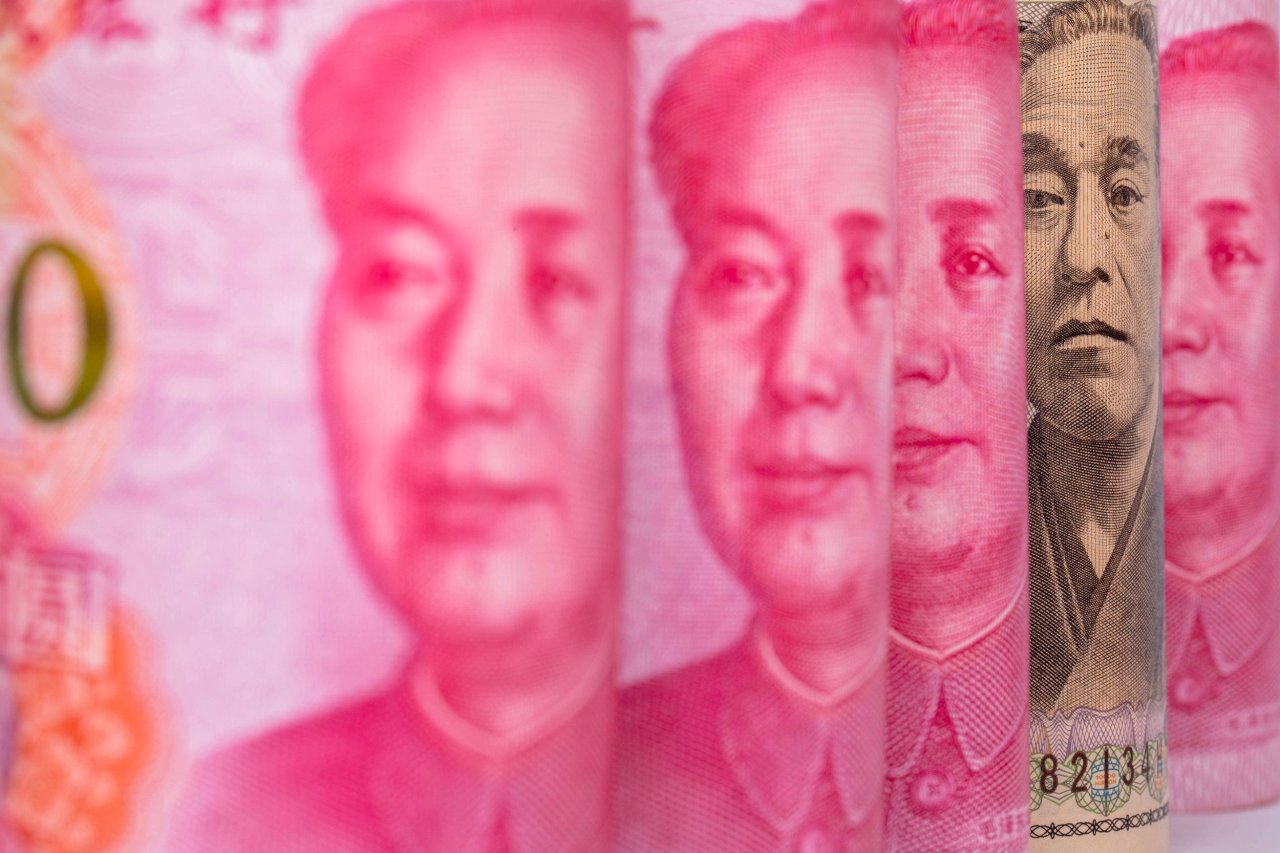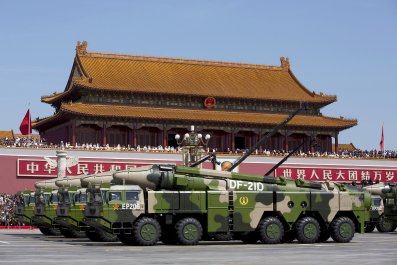The men who oversee China's economy are a prideful lot. Smart and competent, the products of their country's most elite institutions and, in some cases, elite Western schools as well, they have overseen a growth miracle for more than three decades, lifting the world's most populous country from penury to being the second-largest economy. While a financial crisis crippled most of the developed world in 2008–2009, China sailed on, barely scratched.
But now, though they may not like to admit it, Chinese policymakers must look across the East China Sea at Japan's economic turmoil and wonder if what they are seeing is the late stages of a disease that they themselves have caught—and have yet done very little to treat.
There was a time, late into the 20th century, when Western pundits, academics and politicians convinced themselves that the 21st century would be Asia's. ("The Pacific Century," this magazine called it in a cover story in 1988.) The miracle economies of East Asia—Japan, South Korea, Taiwan—had led the way, and China was gearing up to follow. And even though Japan fell down in the early 1990s and has not been able to get up, China seemed to fulfill the prophecies, racing ahead with year after year of rapid growth. Which makes the current economic plight of both countries all the more stunning: Japan and China are now the sick men of East Asia.
That is not to say that their plights are identical, but the similarities are greater than the differences: Both growth miracles were driven by domestic investment, which fed export-led growth; both countries suppressed domestic consumption and elevated savings rates to fuel that investment-led growth. Both countries piled on debt to do so. Moreover, for decades now, Japan has been an aging society with a shrinking workforce, detracting from its gross domestic product growth. China over the next two decades will be much the same.
The effects of the disease Japan has not been able to shake for nearly 30 years are again on full display. On January 29, the Bank of Japan announced that it would implement a policy of negative interest rates in order to forestall yet another onset of deflation. For years, Japan held to a zero interest rate policy (ZIRP) and massive injections of yen into both the bond and stock markets to try to stimulate growth and, thus, at least a little inflation.
Since late 2012, Prime Minister Shinzo Abe's hyped "Abenomics" promised structural reforms that were also supposed to help boost growth. They haven't. The fact that ZIRP has now turned into NIRP (negative interest rates, which means banks must pay the central bank in order to hold their excess cash, in the hope they will instead lend the money to companies) was an admission that everything the government has done over the past three years hasn't worked.
The dire plight of Japan is hard to overstate. If the current quantitative easing policy of the Bank of Japan continues for the next few years—and central bank chief Haruhiko Kuroda seems committed to it—then the assets (government bonds and equities) on the central bank's balance sheet by 2018 will be greater than Japan's economy. The Bank of Japan buys virtually all the debt the government issues and holds roughly 60 percent of the equity market's exchange-traded funds. Japan's fiscal deficit is nearly 8 percent of GDP, and gross government debt will be 260 percent of GDP by the end of fiscal 2016.
Yet real household income in Japan is more than 6 percent lower than it was in 2013, just after Abe came to power; 37 percent of the workforce is on part-time contracts, and the labor market is contracting by 1 percent per year. Little wonder that household spending is anemic and business investment weak, despite the fact that companies are sitting on record amounts of cash.

The move to NIRP set off a mini-panic in Japan's markets; it seemed to dawn on everybody that nothing the government had done had been effective, so why would NIRP be any different? From February 8 through February 12, the Nikkei stock index fell by 11 percent, and yields on the benchmark 10-year Japanese government bond turned negative on February 9.
The only market outlier was the Japanese yen, which rose sharply against the dollar, despite the adoption of NIRP (currencies usually trade lower if their countries' interest rates are low or negative). It says something about the health, or lack thereof, of the global economy that the yen is still seen as a "safe haven" currency. This is because Japan, despite its ongoing economic calamity, is still a creditor nation—and because it's now very unlikely the U.S. Federal Reserve will raise interest rates anymore in the wake of an intensifying global deflationary whirlwind.
"In Japan and, frankly, in every other [major developed economy], policymakers don't seem to know what to do now, except more of what they've been doing, even though it's not working,'' said a senior adviser to a large U.S. hedge fund whose job is to assess government policies in the world's largest economies.
The week the carnage intensified in Japan—and quickly spilled over to most of the rest of the world's markets—China was on vacation for its lunar New Year break. But an email I received from an adviser to the People's Bank of China captured reality well enough: "This is definitely spoiling my holiday," he wrote. The notion that China will inevitably follow Japan into "lost decade" territory drives elite Chinese to distraction. The two countries are, despite large and growing trade ties, fierce economic and geopolitical rivals.
And Beijing is not nearly in the distress that plagues Tokyo—at least not yet. The country is still growing at somewhere around 6 to 7 percent per year. But that growth rate is decelerating more rapidly than the government wanted or expected. And just as Japan's growth model—heavy capital spending and exports—eventually ran into the rocks, so too has China's, as Beijing acknowledges. The problem for Beijing, as it has been for Japan from the early 1990s onward, is rising indebtedness and slowing growth. Currently, it takes about 2.5 renminbi of new credit to generate one renminbi of additional output in China, according to Anne Stevenson-Yang and Carlo Reiter of J Capital Research, a China-focused investment research boutique.
That means that at a time when most economists believe debt growth needs to slow markedly in China, an additional $1.7 trillion in new loans is necessary merely for the government to hit its 6.5 percent growth target this year. Complicating matters for Beijing is the fact that an increasing amount of new debt is being issued merely to service existing debt—a sure sign, in the minds of many analysts, that a debt crisis looms.
And to top it off, capital flight from China is accelerating. In January, China's official foreign exchange reserves fell by nearly $100 billion to $3.2 trillion, the lowest level since 2012. Every month, says Stevenson-Yang, nearly half of what the government calls "total social financing" (the overall amount of credit issuance in the economy) "flees across the border." That in turn means that the amount of new debt needed to meet the government's 6.5 percent target is likely much more than 54 trillion renminbi. The inevitable result of China's still-expanding debt burden, says Michael Pettis, professor of finance at the Guanghua School of Management at Peking University in Beijing, will be "much slower growth going forward" than most people now anticipate.
China is not yet as sick as Japan. Its consumers are better off—personal income is still growing, driving retail sales growth of more than 10 percent last year. And China's transition from an investment-led, manufacturing economy is taking place: In 2015, for the first time, services and consumption amounted to more than half of China's GDP, at 50.5 percent, up from 41.4 percent a decade ago. The issue for Beijing, however, is that the rate of growth in consumption and services may still be less than where it needs to be. That's why the government last month promised a new round of what it called "supply-side" reforms. (What exactly they would be was anyone's guess.)
Sharp reversals of fortune, as Stevenson-Yang wrote recently, "have been an enduring part of Chinese culture, literature and political theory since the earliest writings." What Beijing, and the entire global economy, must hope is that the reversal of fortune now underway is not nearly as severe as Japan's was. If it is, the two sick men of Asia may take the rest of us down with them.



















